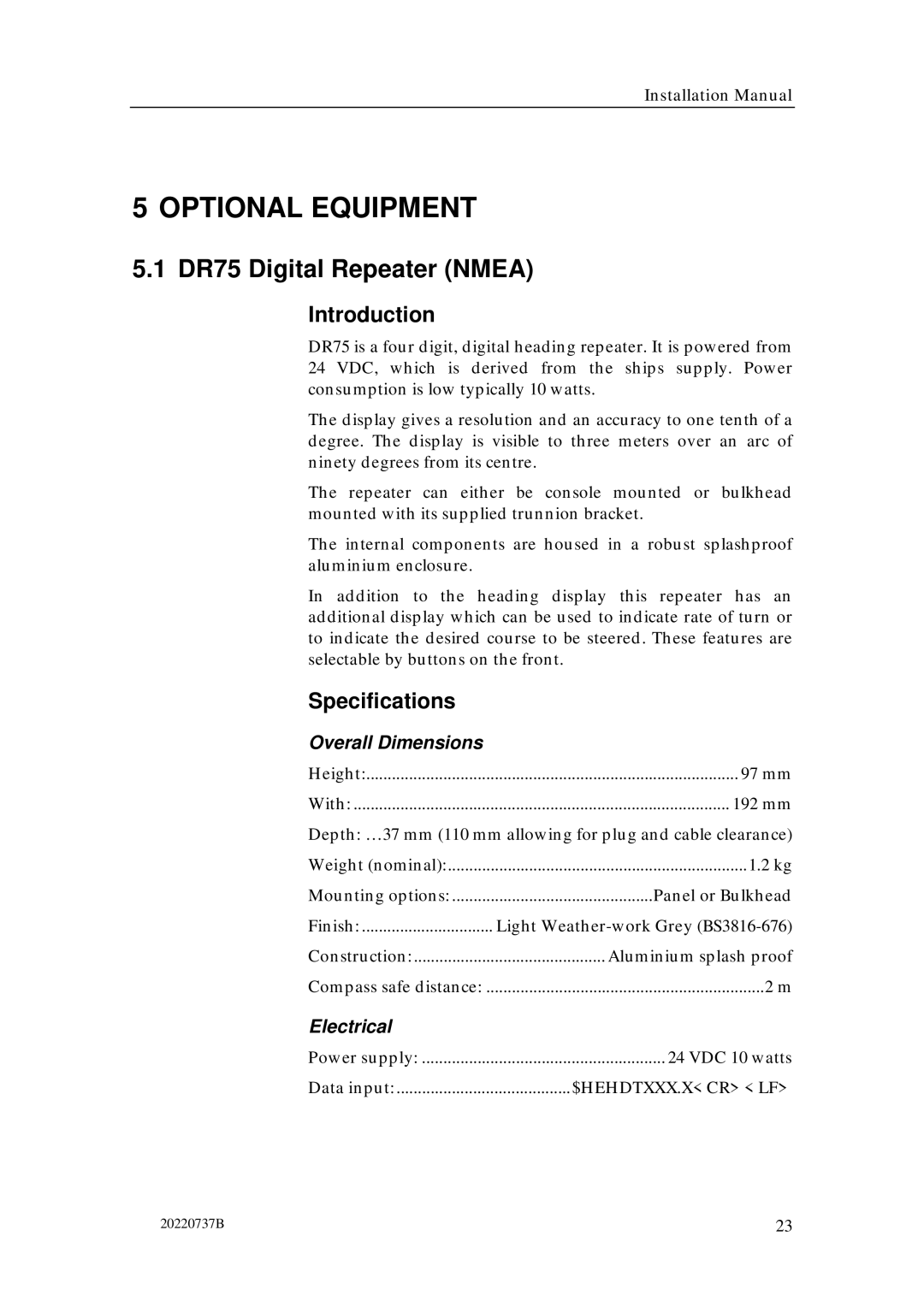RGC12 specifications
The Simrad RGC12 is an advanced marine navigation system designed to enhance ship maneuverability and operational efficiency. This state-of-the-art unit is particularly popular among commercial vessels, fishing boats, and recreational yachts, thanks to its robust features and cutting-edge technology.One of the standout characteristics of the RGC12 is its highly accurate real-time positioning capabilities. Utilizing GNSS (Global Navigation Satellite System) technology, the RGC12 provides precise location data that is crucial for navigation and maneuvering in crowded or challenging maritime environments. This precision is enhanced by the device’s ability to integrate with various positioning systems, ensuring reliability even in areas with poor signal reception.
The RGC12 features an intuitive user interface that simplifies the navigation process. The large, high-resolution display allows for clear visibility of important navigational data, maps, and other critical information. This ensures that operators can make informed decisions quickly, enhancing safety during operations.
Another key feature of the RGC12 is its docking and steering assist capabilities. The advanced algorithms incorporated in the system allow for smooth and precise control of a vessel, especially when maneuvering in tight spaces such as harbors or marinas. The RGC12 can seamlessly interface with autopilots and other navigation systems, resulting in a fully integrated onboard solution that reduces the burden on the crew.
Furthermore, the RGC12 supports a variety of communication protocols, which allows for easy integration with existing ship systems. This compatibility enables vessel operators to customize their navigation setup to fit specific needs, enhancing operational efficiency. The system also provides real-time updates and alerts for potential hazards, weather changes, or navigation obstacles, contributing to safer voyages.
In terms of durability, the Simrad RGC12 is built to withstand harsh marine conditions. Its rugged design ensures reliability even in the most demanding environments. The system is resistant to water and corrosion, making it an excellent choice for long-term use on the open sea.
In summary, the Simrad RGC12 represents a leap forward in marine navigation technology. With its accurate positioning, user-friendly interface, advanced assistive features, and robust construction, it stands as a vital tool for modern mariners aiming to enhance safety and operational efficiency at sea.
